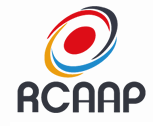Ruminal degradability of oat (Avena sativum L.), Coast cross (Cynodon dactilon L.), and Esmeralda grass (Joysia japonica) hay pellet or not
DOI:
https://doi.org/10.5433/1679-0359.2006v27n2p307Keywords:
Degradation, Food, Forage, Ruminant.Abstract
The objective of this work was to evaluate the ruminal degradability of dry matter (DM), crude protein (CP), neutral detergent fiber (NDF) and acid detergent fiber (ADF) of the oat hay (OH), Coast cross hay (CCH), pellet Esmeralda grass hay (PEH) and Esmeralda grass hay (EH). The in situ technique was used, with four bovines, castrated, rumen fistulated, distributed in an Latin square 4x4 experimental design. The material was incubated in the rumen in the times 0, 6, 24, 48, 72 and 144 hours. There was no difference between hays on the degradation rate (c, %/h) for the CP, NDF and ADF. For the DM, the OH and PEH presented higher degradation rate. There was difference on the effective degradability (ED, %) of the hays, and the observed values were: OH, 48.74%; PEH, 42.44%; EH, 35.13%; CCH, 30.24%. It can be concluded that oat hay presented the highest values for the soluble fraction and for the ED of all nutrients evaluated. The pellet process of the Esmeralda grass resulted in higher ED of the DM and of the fiber, with no alteration on the CP ED.
Downloads
Downloads
Published
How to Cite
Issue
Section
License
Copyright (c) 2006 Ivone Yurika Mizubuti, Fernanda Barros Moreira, Edson Luis de Azambuja Ribeiro, Elzânia Sales Pereira, Alex Martins Varela de Arruda, Marco Antonio da Rocha, José Moura Filho, Andréa Pereira Pinto, Rafael Salmazo, Tiago Rodrigues Casimiro, Teresa Cristina Alves

This work is licensed under a Creative Commons Attribution-NonCommercial 4.0 International License.
Semina: Ciências Agrárias adopts the CC-BY-NC license for its publications, the copyright being held by the author, in cases of republication we recommend that authors indicate first publication in this journal.
This license allows you to copy and redistribute the material in any medium or format, remix, transform and develop the material, as long as it is not for commercial purposes. And due credit must be given to the creator.
The opinions expressed by the authors of the articles are their sole responsibility.
The magazine reserves the right to make normative, orthographic and grammatical changes to the originals in order to maintain the cultured standard of the language and the credibility of the vehicle. However, it will respect the writing style of the authors. Changes, corrections or suggestions of a conceptual nature will be sent to the authors when necessary.


















